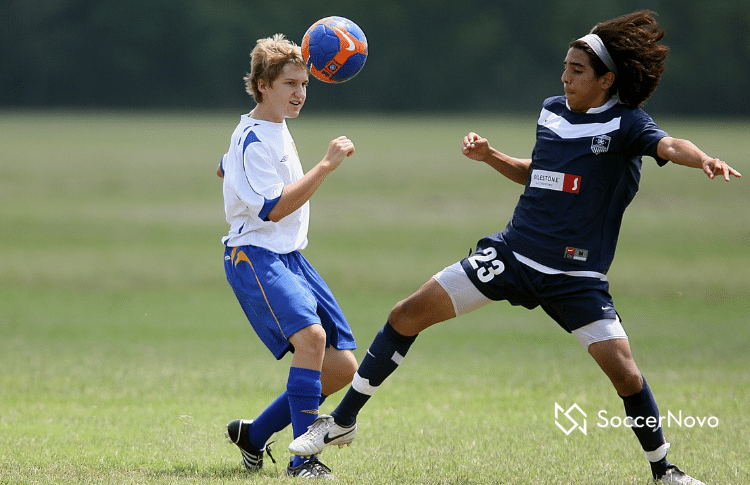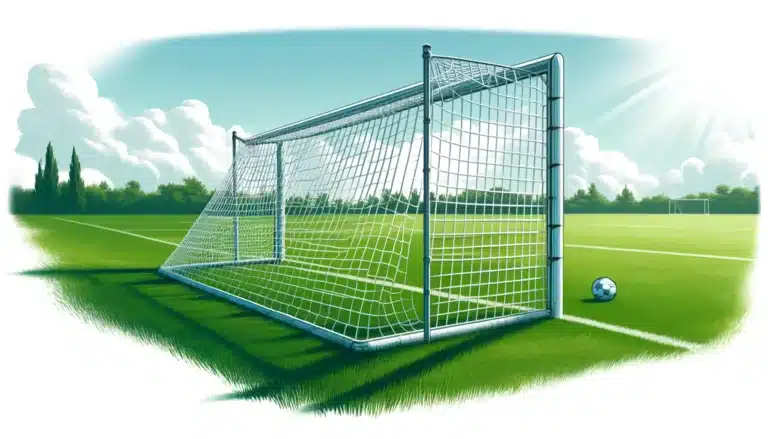Can You Pull the Goalie in Soccer?

Playing with a goalie is obviously important during a soccer game. But, can you pull the goalie in soccer? Let’s say you are down by a goal in extra time, is it worth it and can you do it?
The rules of soccer clearly state that a team must have a goalie on the field at all times. Therefore, pulling the goalie is not permitted in soccer. However, there are certain situations where the goalkeeper may be temporarily reassigned to an offensive position. Once they leave their box, the same rule will apply as any other field player.

While pulling the goalie can provide a team with a numerical advantage in the opposing half, it can also be a risky move. The goal is left unprotected, and if the opposition gains possession of the ball, they can easily score a goal. As a result, the decision to pull the goalie should be carefully considered and made based on the situation at hand.
In this article, we will explore the rules of soccer regarding goalies, the situations where pulling the goalie may be applicable, and the risks and benefits of this move.
Can You Pull the Goalie in a Game?
Unlike hockey, it is not permitted for a team to technically pull the goalie off the field. The rules of soccer clearly state that a team must have eleven players including a goalie on the field at all times.
But, teams can dance around this rule a bit. They have a couple of options including:
- Send a goalie out of their box to play as an attacking player (most common)
- Substitute the goalie out for an attacking player. That player, or someone else on the field, will need to play goalie for the rest of the game. (less common)
If a team pulls the goalie, they are essentially giving up their defense and leaving the goal wide open for the opposing team to score.
If a team is losing by a significant margin and has nothing to lose, they may choose to play without a goalie in order to try to score more goals. Or, if the game is a knockout round in a tournament and the team is down by one, they may choose to use the goalie to pursue the ball forward.
Strategic Implications of Pulling the Goalie
Pulling the goalie is a high-risk, high-reward strategy that can be employed by a soccer team in the dying minutes of a match when they are trailing. While it may seem like a desperate measure, it can be a viable option for a team that is looking to score a goal and level the match.
There are several strategic implications of pulling the goalie that a team needs to consider before employing this tactic. These include:
Increased Offensive Pressure
By pulling the goalie, a team adds another player to the attack, which can increase the offensive pressure on the opposition. This can be particularly effective if the team is trailing by a goal and needs to score quickly. The additional player can create more scoring opportunities and increase the chances of finding the back of the net.

Vulnerability to Counterattacks
While pulling the goalie can increase offensive pressure, it can also leave a team vulnerable to counterattacks. With the goalkeeper out of position, the opposition can quickly launch a counterattack and score a goal. This is particularly true if the team does not have a solid defensive structure in place to counter the opposition’s attack.
I’ve seen goalies in this situation try to run back but they tend to be slower than the forwards of the opposing team and, as a result, they are not able to catch them.
Timing is Key
If a team pulls the goalie too early, they may not have enough time to mount a comeback. On the other hand, if they wait too long, they may not have enough time to score the necessary goals.
Coaches need to carefully consider the timing of pulling the goalie and ensure that it is done at the right moment.
A good time to do it is during corner kicks. The goalie tends to be on the taller side which can provide another threat to score off a header.
Risk vs Reward
Finally, coaches need to weigh the risks and rewards of pulling the goalie. While it can be an effective strategy for a team that is trailing, it is also a high-risk move that can backfire. Coaches need to carefully consider the situation and the opposition before deciding to pull the goalie.
Conclusion
As you just learned, pulling the goalie in soccer can be a risky but potentially rewarding strategy. It involves removing the goalkeeper from the field and replacing them with an extra player in an attempt to score more goals and win the game.
While it’s typically a desperate measure for a losing team during the dying minutes of a match, it can also be used earlier in the game to increase a team’s chances of scoring a goal.
The decision to pull the goalie should be based on a variety of factors, including the scoreline, the time remaining in the game, and the quality of the opposition. Coaches must weigh the potential benefits of having an extra attacker on the field against the risks of leaving the goal unprotected.
According to a mathematical analysis, pulling the goalie can be a viable strategy in certain situations. The analysis found that pulling the goalie when trailing by one goal with 10 minutes remaining in the game can increase a team’s chances of winning by 10-15%. However, the same analysis also found that pulling the goalie when trailing by two goals with 10 minutes remaining actually decreases a team’s chances of winning.
While it can be a high-risk, high-reward strategy, it’s important for coaches to weigh the potential benefits against the risks before making the decision to go for it.

Written By: SoccerNovo
SoccerNovo is an independent youth soccer media brand built to help parents, players, and coaches better understand the game and the pathways available in U.S. soccer. Our mission is to make youth soccer simpler, clearer, and more accessible for everyone involved in it.
Let’s connect




